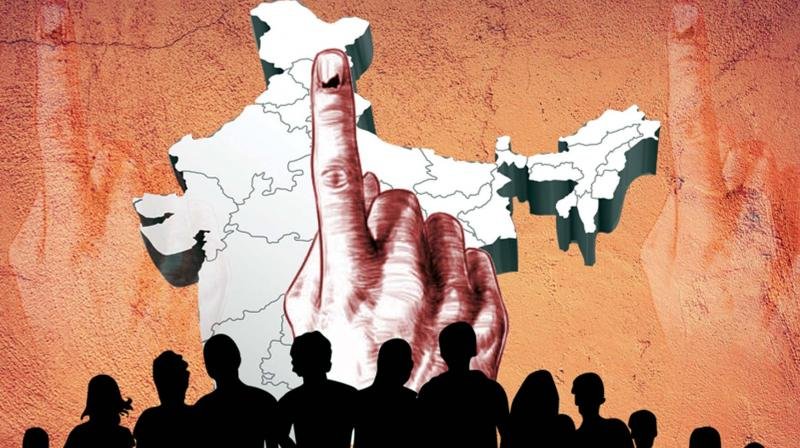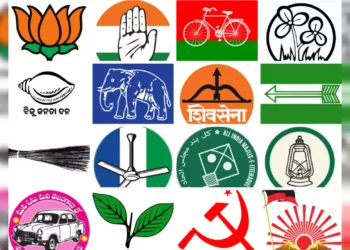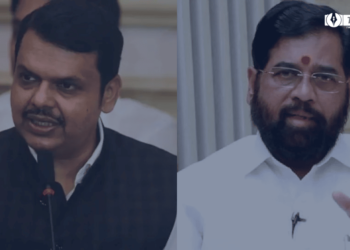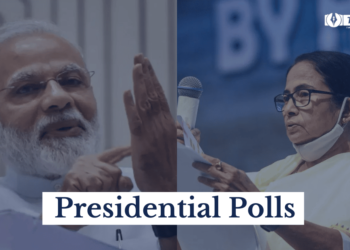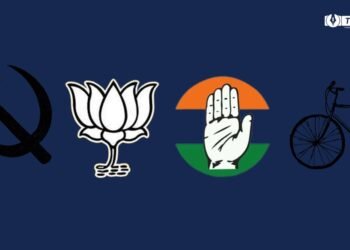[ad_1]
The Assembly Elections 2022 saw a wave of defections in all 5 poll-bound states. Particularly, Manipur and Goa saw a massive defection rate. Some big leaders like Kunwar Ratanjit Pratap Narain Singh, an MLA and Union Minister with the Congress Party and a close aide to Rahul Gandhi resigned from the party and joined BJP. He was just one among those who were a part of the defection wave.
Defection has become an integral part of Indian Politics. Also, India has one of the highest defection rates in the world. If we look at the last 5 years then 417 MPs or MLAs have switched parties. So, this nature of politicians to shift sides has decreased the control of local leaders who display a lack of Fidelity.
At the same time, the country has witnessed some extent of political centralization under Strong personality leaders like PM Modi. The association of people with cult personality leaders like PM Modi, CM Mamata Banerjee, or Delhi CM Arvind Kejriwal becomes more evident due to the lack of Fidelity on local leaders who keep shifting sides. Moreover, the natural and effective connection of the voters with a party leader has become significant for political parties to conceal the negative impacts of defections.

In India, the Prime Minister is the leader of the political party securing a majority of seats and has a certain level of popularity among the masses. For instance, Prime Ministers like Jawaharlal Nehru, Lal Bahadur Shastri, Indira Gandhi, and Rajiv Gandhi had a strong influence on the voters.
Apart from them, the regional parties brought the trend of political centralization where the party campaigns at all levels with the face of a strong leader. Even Prime Minister Modi himself gained popularity as the CM of Gujarat. So, the current situation represents a regionalization in National Politics.
Political Centralization:
The Congress party and its leaders dominated Indian Politics till the 90s. But, soon after the party began to crumble, and the regional parties emerged more successful. Some of the most successful regional parties that emerged in the 90s were Janta Dal (secular), Bahujan Samaj Party (BSP), Samajwadi Party, Janta Dal (United), and TMC. Interestingly, many of these parties are more family-owned parties. In these parties, the founder and his/her family exert control over the party.

Also, when local politicians fail to get the confidence and popularity among the masses, new political parties become more prone to defections from individual members. For this reason, new political parties don’t depend on the popularity of the individual political party rather make a stable vote share for itself.
The new political parties and regional parties even try to build a direct connection between the voters and party leaders to develop an influential personality of the party leaders that strengthen the party. Consequently, there is less impact of political defections on the political party and the election results. To build an influential personality of the party leaders, they make use of media resources and other promotional and PR strategies.
Earlier, this was only limited to new or regional parties. But, now it is being used by national political parties like BJP who have a considerable dependence on PM Modi. A negative impact of this is that many times the party focuses on the image building and image maintenance of the party leader and not on fulfilling electoral promises.
The Role Of Technology:
Political centralization has been supported by technological developments. In this case, the political parties directly target a section of voters. For instance, the government can directly transfer a specific amount of money into the farmer’s bank account for financial aid to marginal farmers. Technology plays a major role in it with the development of a single aadhaar program and increase in the use of bank accounts and linking it with an aadhaar card.
Now, this method decreases the role of middlemen or intermediaries who were blamed for not passing the benefit to the needy. The politics in India is based more on economic delivery where voters are more influenced by government aid rather than political ideology during the voting process. So, overall technology enables the party to directly claim credit and target different sections of the society.

As a result, you might have noticed that the political parties try to offer more government aid in their political promises like in Punjab AAP promised to give 1000-2000 rupees to housewives every month. Technology helps the government to directly transfer the money and claim credit from a particular section of women in society.
Summing up,
In the last few decades, India has witnessed centralization of politics where political parties focus on putting up Strong Party Leaders who can directly build connections with the public benefiting in elections and reducing the impact of defections.
Also Checkout: UP Elections: From “Coco” to “Bull”, events that made the headlines
[ad_2]
Source link


